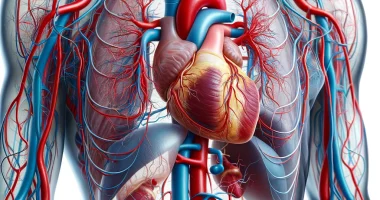Congenital craniofacial abnormalities
Congenital craniofacial abnormalities or facial clefts are formed in the early intrauterine period due to spontaneous mutations provoked by biological, chemical, or physical teratogenic factors. In addition to the aesthetic defect of appearance, the child has multiple disorders of nutrition, speech, and breathing. Diagnosis is performed antenatally on ultrasound, postnatally with a CT scan of the facial part of the skull, and oropharyngoscopy to clarify the cause of the pathology appointed cordocentesis, amniocentesis, and genetic testing. Treatment of facial cleft involves different types of plastic surgery with the help of orthodontists, speech therapists, and rehabilitation specialists.
General information
The incidence of facial formation anomalies is 0.6-1.6 cases per 1000 newborns. Pathology accounts for 13% of all congenital malformations and ranks 2-3 in prevalence. Over the past 40 years, the number of patients has increased on average by 1.5-2 times, caused by the increasing number of teratogenic influences and improved quality of medical care. Such children have a significantly longer life expectancy. Facial clefts are not only a medical but also a social problem that requires complex treatment measures.
Reasons
The development of congenital anomalies of facial structure involves exogenous teratogenic influences and endogenous influences, including genetic material mutations and various parents’ diseases. In the combination of these factors, the process of embryogenesis is disturbed, and the fetus has a deformed facial skeleton.
Point changes in the genetic code are considered the most frequent etiologic factor, occurring in 92-93% of children with clefts. The remaining 7-8% are gross chromosomal aberrations, including Patau, Edwards, and catcall syndromes. Possible causes of damage to genetic material accompanied by the formation of facial clefts include the following:
- Damage to germ cells. Biological inferiority of parental material at conception is associated with improper lifestyle (smoking, alcohol, drugs), exposure to occupational hazards, and environmental factors. The older the parents are, the higher the child’s cleft formation risk.
- Peculiarities of the course of pregnancy. Significant prerequisites for malformation are malposition of the fetus, uterine tumors, and multiple pregnancies. These factors interfere with the normal formation of the skeleton of the child. Abdominal trauma in the first months of gestation also serves as a risk factor.
- Extragenital diseases of the mother. The risk of congenital malformations increases if the pregnant woman has endocrine disorders: diabetes mellitus, hypothyroidism, and hypercorticism. Bone anomalies can be provoked by anemia in the mother and associated chronic intrauterine hypoxia in early gestation.
- Chemical factors. Strong teratogenic influence is exerted by poisons (gasoline, formaldehyde, salts of heavy metals), drugs – cytostatics, corticosteroid hormones, and excessive consumption of vitamin A. The probability of cleft face formation increases if a pregnant woman suffers from chronic alcoholism, substance abuse, or drug addiction.
- Biological factors. Children in the risk group are those whose mothers had rubella, measles, or chickenpox during pregnancy or are carriers of cytomegalovirus or herpes simplex virus. Occasionally, disorders of embryogenesis are provoked by infection with bacteria and protozoa.
Classification
Taking into account the etiologic factor, hereditary, exogenous, and multifactorial anomalies are distinguished, but in 25% of cases, the exact causes cannot be established. According to the degree of severity, there are gross lethal and non-lethal malformations. In practical pediatrics, as a rule, the classification according to the anatomical localization of defects in the structure of the facial skull is used, according to which they are distinguished:
- Facial clefts are proper: medial, oblique (coloboma), transverse (macrostoma).
- Cleft upper lip: congenital hidden, incomplete (with/without nasal deformity), congenital complete.
- Cleft palate: hidden, complete, incomplete.
Symptoms
Signs of facial clefts are detected immediately after birth. Anatomical disorders of the facial skeleton are different and depend on the type of pathology. The most typical manifestations of facial development anomalies in newborns are obvious or hidden clefting with shortening of the upper lip, deformation of the skin and cartilage of the nose, and clefting and shortening of the palate.
Changes in the facial skeleton are accompanied by multiple functional disorders in the newborn. Damage to the nose causes breathing disorders, due to deformation of the lips and lack of tightness of the oral cavity, the child cannot suckle the mother’s breast. Defects of the palate contribute to the entry of milk into the upper and lower respiratory tract.
Complications
In the presence of a facial cleft, unheated air from mouth breathing enters the respiratory tract, causing nasopharyngitis, laryngitis, and bronchitis. Inflammation of the nasopharynx in 75% of cases is complicated by eustachyitis and otitis media, resulting in permanent hearing loss in the infant. Aspiration of food during sucking causes severe pneumonia. Due to the failure of the articulatory apparatus, the child has a weak silent cry, speech development slows down, and open rhinolalia develops.
Milk/mixture intake disorders are a major risk, causing the infant to lack nutrients, lag in physical development, and suffer from hypovitaminosis. As the child grows up, problems with teething, bite abnormalities, and chewing disorders are of concern. Secondary functional complications appear in early childhood and preschoolers. They include decreased immunity and psychoneurotic manifestations.
Diagnosis
Congenital facial anomalies are mostly detected in the antenatal period during routine ultrasound screening of the pregnant woman. In this case, the doctor assesses the size and depth of the lesion to plan the course of reconstructive surgery in advance and adjust the protocol of labor management. If combined disorders are suspected, amniocentesis and cordocentesis with subsequent genetic diagnosis are performed. In the postnatal period, a full range of examinations is prescribed:
- CT of the facial skull is the most informative method for detecting bone and soft tissue deformities, determining their degree of severity, and determining the depth of the defect. Tomography shows associated pathologies of the ENT organs, often accompanying facial clefts.
- Rhinoscopy. A detailed examination of the nasal cavity is performed to diagnose palatal incompleteness, deviated nasal septum, and deformity of the cartilaginous part of the external nose. During the examination, the doctor excludes choanal atresia, which can occur in the combined variant of the malformation.
- Oropharyngoscopy. The examination begins with a thorough examination of the oral cavity, during which the pediatrician diagnoses clefts of the soft and hard palate and deformation of the alveolar processes of the upper jaw. Then, the doctor examines the state of the pharynx and tonsils.
- Face and skull X-Ray. This special diagnostic method is recommended before orthodontic correction. It gives the dentist detailed information about the anomalies of the dentoalveolar row’s development, shows the state of the bite, and reveals periodontal inflammation and other complications. In a comprehensive examination, the method is complemented by orthopantomography.
Treatment of facial clefts
Correction of facial skeletal anomalies is a complex task, requiring the participation of a neonatologist, orthodontist, and maxillofacial surgeon. When indications for treatment of a newborn are identified, a neurosurgeon, otolaryngologist, and geneticist are involved. At the first stage (0-1 months of life), a thorough diagnosis of the malformation and planning of surgery are provided, supportive therapy is prescribed, and an optimal method of feeding is selected. Comprehensive treatment includes the following stages:
- In infancy (1-12 months of age), initial orthodontic correction with removable or fixed maxillary appliances is performed. Surgical care includes primary cheiloplasty, cheilorhinoplasty, and the first stage of two-stage uranoplasty. During this period, surgeons also perform primary correction of coloboma and macrostomia.
- In the early childhood period (1-3 years), orthodontic treatment is continued, and speech therapy is started to correct speech formation. The second stage of uranoplasty, cranioplasty, and restoration of the naso-orbital area are performed. If necessary, bone-plastic reconstructions and distraction osteosynthesis are performed.
- In preschool age (3-7 years), repeated reconstructive and restorative interventions are provided to finally eliminate the visible defect and achieve the best possible aesthetic result. Speech-improving and hearing-improving operations are performed. Various orthodontic appliances are used to correct the bite.
- At school age, osteoplasty of the alveolar process is performed to form a correct permanent bite, and the teeth are aligned with a bracket system. Repeated open rhinoplasty is performed in adolescence to improve the symmetry and aesthetics of the face. If indicated, other aesthetic plastic surgeries are recommended to the patient.
The main array of rehabilitation measures is planned for early childhood and preschool age so that by the time the child enters school, they are maximally adapted and do not have gross deformities of appearance. Parents need to be prepared for prolonged treatment since the average number of cleft operations is about 4-7 surgeries, up to 65 appointments with an orthodontist, and up to 60 visits to a child psychologist.
All these treatment options are available in more than 200 hospitals worldwide (https://doctor.global/results/diseases/congenital-craniofacial-abnormalities). For example, Repair of congenital skull defects can be done in 20 clinics across Turkey for an approximate price of $5.0 K(https://doctor.global/results/asia/turkey/all-cities/all-specializations/procedures/repair-of-congenital-skull-defects).
Prognosis and prevention
The treatment results are determined by the localization of the cleft, the degree of damage to the articulation apparatus, and the timeliness of the surgery. In the future, the child may require the services of a speech therapist, psychologist, and rehabilitation therapist. Prevention of the disease includes medical and genetic counseling, exclusion of the influence of teratogenic factors in pregnancy, and parents’ adherence to a healthy lifestyle when planning conception.


